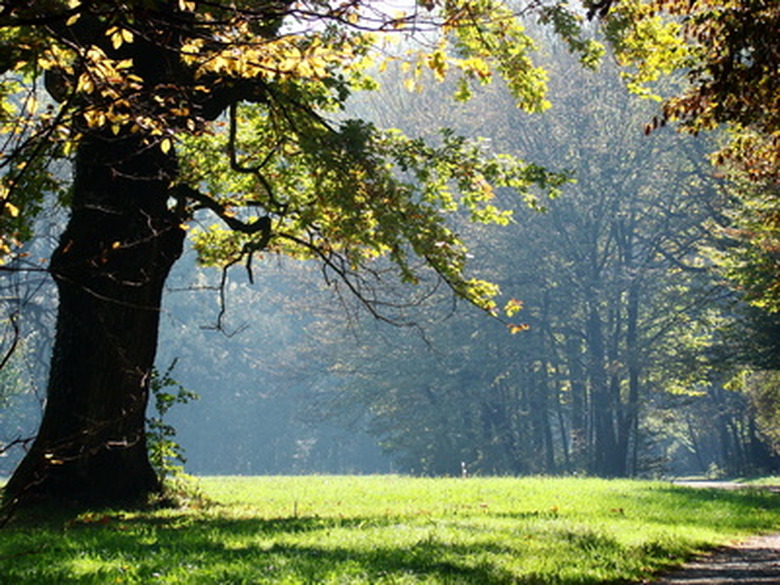How To Water A Live Oak Tree In Texas
Things Needed
- Water
- 36-inch wood or metal dowel
The live oak, known botanically as the species Quercus virginiana, is a large evergreen tree native to the coastal plains of Texas and other areas of the Southern United States. According to the University of Texas at Austin, live oak trees are medium users of water and though drought tolerant when established, really prefer moist soil. They possess a large canopy and will grow more quickly and lushly with deep, consistent watering. Seasonal guidelines help establish a basic watering regimen, but careful observation of weather and soil conditions, with adjustments when needed, will ensure the tree is never under drought stress for any prolonged period.
Step 1
Water your Texas-grown live oak tree deeply and infrequently to soak the root zone to a depth of 18 to 36 inches. Roots of younger trees will be shallow, compared to older trees.
Step 2
Insert a thin wood pole or metal rod straight into the soil a few feet out from the trunk to check moisture at the root zone. The soil needs to be drenched but not soupy. Over time you will learn how much water over a given period of time achieves this standard, and the pole test will not be necessary at each irrigation session.
- The live oak, known botanically as the species Quercus virginiana, is a large evergreen tree native to the coastal plains of Texas and other areas of the Southern United States.
- Seasonal guidelines help establish a basic watering regimen, but careful observation of weather and soil conditions, with adjustments when needed, will ensure the tree is never under drought stress for any prolonged period.
Step 3
Increase the frequency and volume of irrigation in the heat of the Texas summers and early fall. Water deeply once a week to every 10 days, applying three to five times the amount of water given in spring, late fall or winter.
Step 4
Decrease the frequency of irrigation in the winter to once every four to eight weeks. Use the the four-week guideline when rainfall has been scant or nonexistent and closer to the eight-week guideline when rainfall has been normal or heavy for your area.
Step 5
Increase watering volume and frequency during periods of persistent drought throughout the year when rainfall is scant or weather conditions are particularly windy or dry.
Tip
Consider your soil texture and tweak water amounts and application intervals accordingly. Sand-laden soil loses water more quickly than clay soil. Water trees growing in sandy soil conditions at closer intervals for less time than those growing in clay soil.
